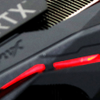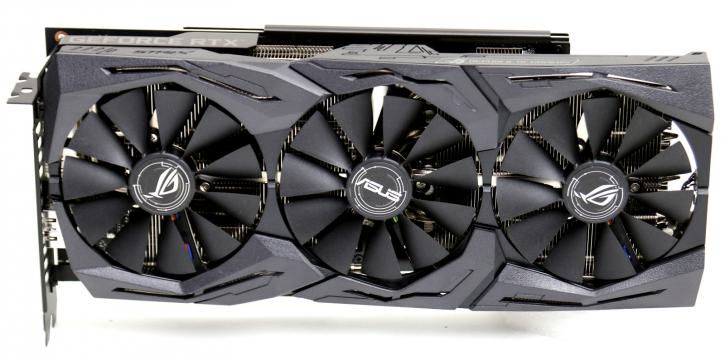Introduction
ASUS GeForce RTX 2060 STRIX GAMING OC edition (6G
We review the new ASUS RTX 2060 STRIX OC edition. This premium product has already been tweaked the cards towards an 1830 MHz Boost frequency for you, making this a very rather fast offer in the RTX lineup, that looks terrific and familiar as well.
It has been a fairly crazy ride with NVIDIA the past few months, roughly 4-5 months ago the GeForce RTX 2080 and 2080 Ti became available. People had been very interested and were warmed up for the DLSS (Tensor) features and the ability to play Battlefield V in that hybrid Raytraced way. NVIDIA initiated massive internet virals to gain media coverage. But then the bubble exploded in their face as end-users looked the other way when they learned about the incredibly steep price level. Then when Battlefield V launched, lots of people where like, that's it? That is the difference while looking at eye soaring low framerates while they need to put hundreds of dollars and euros on the table to make use of new RT and Tensor technology. A patch and driver or two later did improve overall performance, however, with graphics cards sitting in an 800 USD/ EUR (RTX 2080) and 1250 USD/ EUR (2080 Ti) range while not coming down (the price that is) things became difficult. The launch of the GeForce RTX 2070, was received better. The primary perf issues with Battlefield V had been solved mostly shortly after release and a card with a 500~550 EUR/USD price tag feels better while still being very expensive. The past few months RTX became a tough sell and NVIDIAs popularity declined in a negative spiral. Whenever that happens, as a company you need to set things right. The first attempt at that will be what we review today, a product that most people can afford, the GeForce RTX 2060. The xx60 range typically is mainstream slash mid-range, however, at 349 USD (and really that's where it'll start) we do wonder how the general public will feel about that price. The last-gen GTX 1060 was launched at 299 USD. Before that era mainstream was in a 199 USD range. So in just a few years, prices have risen 75%, one year away of getting doubled if this trend continues. Admittedly, technology evolves, the fabrication nodes are more expensive, the anything RTX also uses more expensive GDDR6 memory. Everything factors in. Let's hope it's enough, as we really do like the RTX 2060 and it is in a price range that most people can afford. The big question that remains, is this product enough?
STRIX GAMING OC edition 6G
The 4th model RTX card once again is based on Turing architecture, offering a fundamental change in the graphics card arena as next to your normal shading engine, NVIDIA has added 30 RT (Raytracing) cores, as well as 240 Tensor (AI), cores onto the new GPUs, and these are active. Active but more limited I should say, the GeForce RTX 2060, really is making use of a reconfigured GeForce RTX 2070 chip. The GPU has been cut-down as well as the memory configuration in size. The new RTX series is mostly about DX-R (DirectX-R compatible hardware accelerated Raytracing). This review covers the reference card, also referred to as founder edition. It has been fitted with 6GB of GDDR6 memory (14 Gbps). This 160 Watts rated graphics card has 1920 activated shader processors (that value is 2304 on the RTX 2070). It has a proper 1680 MHz boost clock for the standard founder version and there will be no differentiation for the reference values compared to the AIB partners. The card has 6 GB of the now familiar GDDR6 memory running a 192-bit wide bus (336 GB/s), the price for the AIB product is sitting in that 350 USD range.
Having smaller TU106 silicon with close to 11 Billion transistors it doesn't run too hot. The cooler is dual-slot design. The ASUS ROG GeForce RTX 2060 STRIX Gaming OC is back with that familiar cooler Look. We review and test the Republic Of Gamers card from ASUS which comes all custom cooled and a revamped custom PCB design. The board is fed by two 6 and one 8-pin power connectors and shows a surprise or two. One is a BIOS offering a silent mode, operating at slightly higher temps while giving roughly the same performance as 'performance' mode switch. The icing on top of the cake is a factory Boost frequency of 1830 MHz, making the product significantly faster than the founder edition card. Though the GDDR6 memory has been not been tweaked, the ICs are stock 14 GHz (effective clock-rate) but can be bumped upward towards 15 to 16 GHz with the flick of your fingers as we'll show you in the tweaking chapters. The card offers two HDMI ports and two DisplayPorts. ASUS as well dropped the DVI and Virtual link (USB) connector. Embedded as well is a LED lighting system and a rear side located fan and LED connector, everything about this product states 'premium' really. And yeah, we have enough to talk about and to show. We'll start with a product overview in the photo-shoot, but have a quick peek first.


